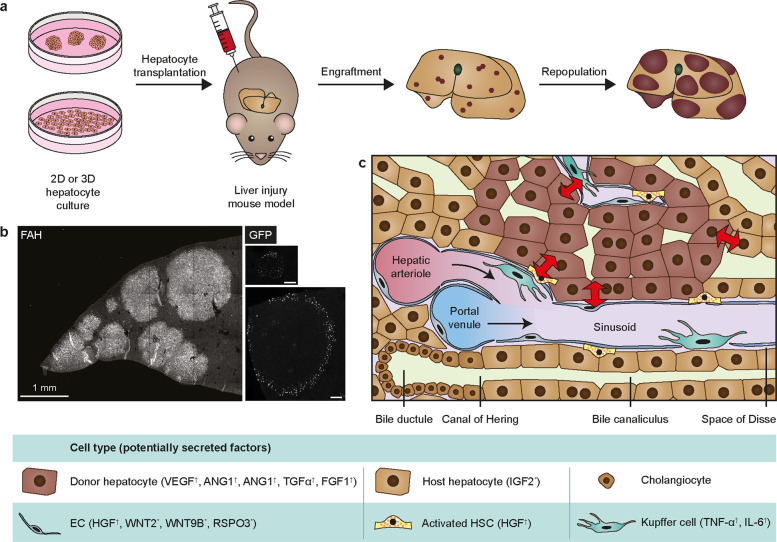Fig. 4. An overview of hepatocyte transplantation in mice and cellular crosstalk between donor hepatocytes and the host liver microenvironment.
a Preclinical hepatocyte transplantation studies are typically performed in mice with inducible hepatocyte-specific liver injury to evaluate the in vivo regenerative capacity of in vitro-expanded hepatocytes. In this setting, the regeneration of host hepatocytes is impaired, giving donor cells a proliferative advantage. b Transplantation of cultured murine hepatocytes in Fah−/− mice results in repopulation of the host liver parenchyma by donor cells. Left panel: Transplanted murine hepatocyte organoids gave rise to grafts of various sizes, as shown by immunostaining of FAH. Right panels: upon transplantation of hepatocytes isolated from doxycycline-treated Axin2-rtTA;TetO-H2B:GFP reporter mice, GFP+ cells could be observed in donor cell grafts by immunofluorescent imaging. Upper panel: smaller grafts showed scattered GFP+ donor cells. Bottom panel: Larger grafts showed GFP+ cells at the graft-host tissue boundary only. Scale bars: 100 µm. Images adapted from Peng et al. 201825. c Crosstalk between donor hepatocytes, host hepatocytes, and other cell types in the injured host liver microenvironment facilitates donor cell repopulation. Potential factors that contribute to donor cell repopulation in the host liver, based on hepatocyte transplantation studies25,144–147 (indicated by *) and liver regeneration studies53,60,63,142 (†), are listed in the lower panel. ANG: angiopoietin; HSC: hepatic stellate cell; EC: endothelial cell.

